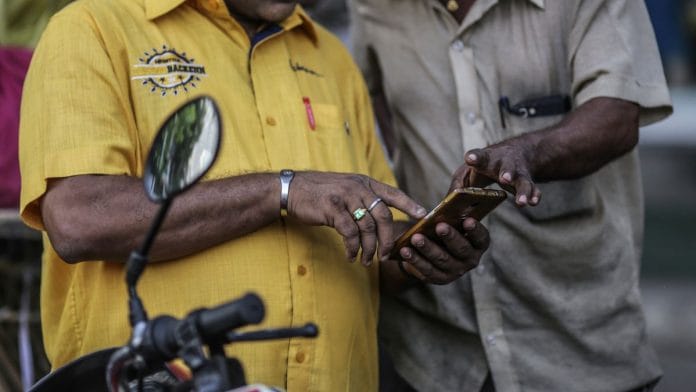India has become the largest market for WhatsApp with more than 400 million or 40 crore users. WhatsApp has altered how people experience entertainment, conduct politics, or engage in business transactions, but its impact on governance has not received enough attention. Is it augmenting bureaucratic efficiency and improving the state’s performance in delivering public goods and services to citizens?
Our interactions with local bureaucrats from Maharashtra, Odisha and Haryana suggest that WhatsApp is a) reducing information asymmetry within the bureaucracy (between the frontline staff and their superiors), and b) facilitating coordination between multiple stakeholders. Most importantly, it is addressing the two weaknesses of governance delivery in India – last mile monitoring and accountability.
Eliminating information asymmetry
During our fieldtrips in various parts of rural India, we encountered an increasing reliance of the bureaucratic machinery on WhatsApp for official communication. Senior officers at the district and sub-district levels face standard principal-agent challenges. Due to limited resources for monitoring, officers find it difficult to hold subordinates accountable for their work and ensuring compliance. In our interviews with tehsil-level officials from the three states, we found a strikingly common pattern – the use of WhatsApp groups to monitor and track activities of lower-level staff.
‘So how do you ensure that the citizen applications don’t remain pending for a long time?’, was our first question to a tehsildar (head of a revenue administration in a tehsil) in Odisha. ‘Oh, that is easy,’ responded the tehsildar, showing us his new smartphone and specifically a WhatsApp group. This group included all the patwaris or revenue inspectors – the lower-level staff who reported to the tehsildar and were responsible for processing citizen applications.
One WhatsApp group, for instance, had messages for the lower-level officials asking them for status updates on specific citizen applications, which seemed to have not been processed for more than a week. Then there was another group for matters related to land disputes and another one for management of revenue collection. What the tehsildar was doing is part of a larger pattern across different government offices across India.
A government official in Haryana, for instance, told us that district officials have made separate groups for connecting with their frontline staff. These groups allow officials to raise critical issues, immediately elicit responses from their employees, and enable real-time problem solving. Often, the staff share the difficulties they face on the field with their colleagues and seniors (who in turn often suggest relief measures). Just like the district-level staff were requesting updates from their subordinates, senior officials (at the state level) posted in state capitals such as Chandigarh, Bhubaneswar and Mumbai were using different WhatsApp groups to get updates from district officials.
Also read: How WhatsApp is helping Indians lose weight, gain abs, and make money
Facilitating coordination
Government programmes often require coordination between multiple stakeholders, and WhatsApp groups have become essential platform for inter-department coordination efforts. District-level officials from across Haryana told us that they operated WhatsApp groups for monitoring and coordinating the work done by various line departments and stakeholders.
For instance, the Haryana government digitised the application process for all government schemes and services last year through its SARAL initiative. We were told that district-level WhatsApp groups were very helpful in facilitating this initiative that is spread across multiple agencies. A former member of Chief Minister’s Good Governance Associate (CMGGA) programme in Haryana noted that the pendency status of applications for various line departments within the district is regularly shared on WhatsApp groups actively monitored by the deputy commissioners (DCs). The DCs use these groups to direct the relevant official to resolve the pendency.
Similarly, we actively worked with the district administration in Banda in Uttar Pradesh on a voter mobilisation drive during the 2019 elections. The district magistrate (DM) created a WhatsApp group to coordinate with various stakeholders involved in this initiative. The DM personally monitored the group and used it for communicating directives to his staff, encouraging the stakeholders to share ideas for the project, and applauding their efforts and motivating them. The increase in voter turnout in Banda district was substantial, one of the highest in Uttar Pradesh and perhaps in the country if one accounts for state-level factors.
In Odisha, the disbursal of flood relief required coordination across agriculture and revenue departments. A district-level official told us that WhatsApp groups were created to facilitate inter-department coordination. The agriculture extension officer, responsible for assessing crop damage, and the Amin, a revenue official responsible for identifying the land, reported their activities on the same group.
Also read: 2019 mandate: Governance measures at state levels helped this government return to power
Technology can solve only some hurdles
What does the mushrooming of WhatsApp groups in the sphere of governance mean for how we think about the Indian state? Social scientists have long complained about the uneven characteristics of the Indian state. Lant Pritchett, an economist from Harvard, describes the Indian state as flailing – where the top holds but the bottom is floating. Others, like Yamini Aiyar, have highlighted multiple times that frontline bureaucracy in India is the weakest link in the chain of governance.
Our limited experience observing WhatsApp governance suggests that some of the principal-agent challenges are being tackled – frontline staff is now at the district officials’ fingertips (pun intended) and it has become easier to monitor their work and hold them accountable.
However, the optimism around WhatsApp groups, like any other technological solution, needs to be tempered by the structural constraint under which officials at the district level in India operate. The investment in officials remains the same, along with the political pressure, incentives for corruption and multiplicity of tasks. These structural factors are barriers to improving the performance of the state bureaucracy. WhatsApp, like any technology, can only amplify good intentions, it cannot create them.
Anustubh Agnihotri and Pranav Gupta are PhD students at University of California, Berkeley; Rahul Verma is a fellow at Centre for Policy Research, Delhi. Views are personal.






